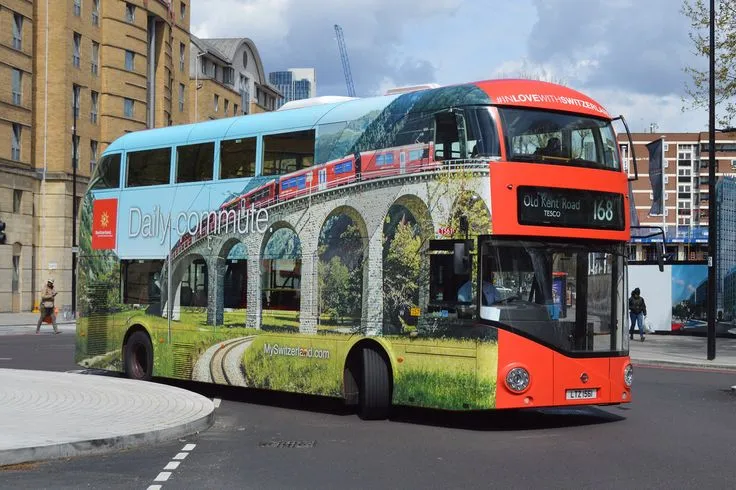In the ever-competitive world of travel marketing, tourism boards must be strategic in choosing where and how to promote their destinations. Among the wide array of available advertising channels, London bus advertising stands out as a particularly compelling choice. From the bustling heart of the capital to its outer boroughs, red buses aren’t just a means of transportation – they’re a cultural symbol and a high-impact media platform.
But what makes London bus advertising so attractive to tourism boards worldwide? Here, we delve into the key reasons behind this popular choice.
1. Unrivalled Visibility in One of the World’s Most Visited Cities
London consistently ranks among the top cities globally in terms of international visitors. With millions of tourists, commuters, and residents navigating the city daily, buses – particularly the iconic red double-deckers – offer unmatched exposure. Bus advertising ensures that your destination’s campaign is seen not only by Londoners but also by a global audience passing through major areas like Oxford Street, Trafalgar Square, and Piccadilly Circus.
Tourism boards know that promoting a destination in a city as cosmopolitan and influential as London sends a powerful message: we're ready to welcome the world.
2. Mobile Billboards with Citywide Reach
Unlike static billboards confined to a single location, buses move through every postcode and borough. This mobility allows campaigns to reach diverse demographics across the capital, from affluent areas in Kensington to artsy neighbourhoods in Shoreditch.
For tourism boards, this means broader coverage and a better chance of connecting with potential travellers, regardless of their location or daily routine.
3. High Frequency and Repetition
Bus advertising benefits from repetition – one of the golden rules of marketing. With hundreds of buses operating across London’s extensive network, people see the same advert multiple times a day, whether they’re walking to work, sitting in traffic, or on a bus themselves.
This frequency builds familiarity, reinforces brand recall, and encourages engagement. For destinations trying to build top-of-mind awareness, this level of repeated exposure is invaluable.

4. Creative Freedom and Format Versatility
Tourism boards often rely on strong visual storytelling to inspire wanderlust, and bus advertising offers multiple formats to suit this need:
- T-sides (advertisements on the side of the bus)
- Supersides (long horizontal panels across the bus body)
- Rump panels (on the rear)
- Full wraps (covering the entire bus)
This range of options allows for eye-catching, large-scale creative that showcases vibrant landscapes, cultural attractions, and local experiences – all crucial for enticing travellers.
5. Prestige and Cultural Capital
London buses are more than just transport; they’re a globally recognised symbol of Britain. Associating a tourism campaign with this cultural icon adds a layer of prestige. Seeing your country or city featured on a classic red double-decker bus lends a sense of international appeal and status.
For tourism boards, this isn't just advertising – it’s a statement.
6. Cost-Effective Compared to Other Outdoor Media
While premium placements in zones like Piccadilly Circus or the London Underground can be expensive and limited in duration, bus advertising offers a relatively cost-effective solution for extended exposure. Campaigns can run for weeks or months, maximising ROI for tourism boards working within tight budgets.
When trying to stretch marketing funds across multiple channels and markets, the cost efficiency of bus advertising becomes a major asset.
7. Strategic Timing for Seasonal Campaigns
London bus advertising is particularly well-suited for seasonal tourism campaigns. Whether it’s promoting a ski destination in winter, a sunny coastal retreat in summer, or a cultural festival abroad, buses can carry timely messages directly to an urban audience, often looking for their next escape.
Many tourism boards plan London campaigns to coincide with key travel booking windows, ensuring they’re front and centre when travellers are making decisions.
8. Digital Amplification and Shareability
Creative, visually striking bus adverts often catch the attention of passers-by who share photos on social media. This organic amplification means your campaign can go beyond the streets of London and reach online audiences globally.
Many tourism boards now incorporate hashtags, QR codes, or integrated campaigns that connect physical media with digital experiences, boosting both reach and engagement.
9. Partnership Opportunities
Tourism boards frequently collaborate with national airlines, local travel agencies, or government trade bodies on integrated campaigns. London bus advertising provides a shared platform to showcase joint messaging, such as “Fly direct to Cape Town with British Airways” or “Discover Malaysia – Book now with Trailfinders”.
Such co-branded efforts enhance credibility and can drive measurable travel intent.
10. Proven Track Record of Success
From Australia to the Caribbean, many tourism boards have already leveraged London buses to great effect. Campaigns have increased web traffic, boosted brand awareness, and in some cases, directly impacted visitor numbers.
Success breeds success – and many boards return year after year to capitalise on the platform’s proven performance.
In the age of digital marketing and programmatic ads, traditional media still has a place, especially when it's as iconic and effective as London bus advertising. For tourism boards, it represents a unique blend of visibility, prestige, creativity, and value.
By taking their message to the streets of London, destinations can speak directly to a global, travel-ready audience – and invite them on their next great adventure.
